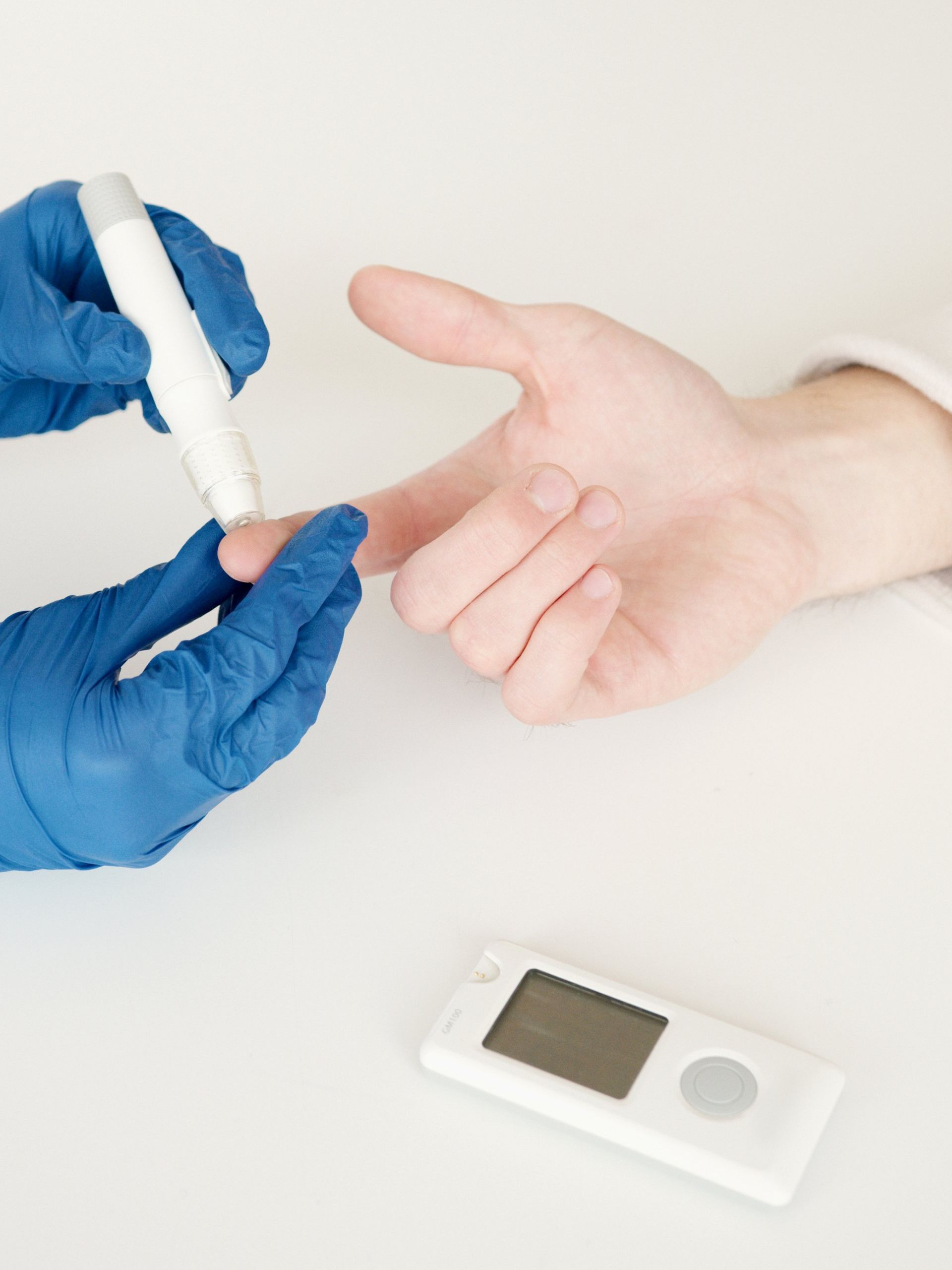Diabetes
Diabetes Diagnosis and Management
Diabetes is a chronic medical condition that disrupts your body’s management of glucose, or blood sugar, and the insulin it produces. Glucose is a crucial component of effective brain function and provides essential energy to your body’s tissues and muscles.
The pancreas’s ability to produce insulin is tied to the presence of glucose in your bloodstream. Digested food results in glucose being absorbed into the bloodstream, which signals the pancreas to release insulin. Insulin facilitates the absorption of glucose for use as energy and the storage of glucose for future use.
In type 1 diabetes, the pancreas fails to produce sufficient insulin. In type 2 diabetes, the body becomes resistant to insulin, which causes insulin production to decline. This results in elevated glucose levels in the blood, which can lead to serious health complications if not managed properly.
There are three types of diabetes:
- Type 1 Diabetes: Type 1 diabetes is an autoimmune condition that’s most commonly diagnosed in children and young adults. A patient’s immune system attacks their body by destroying the glucose cells in their pancreas, leading to hazardously low insulin production.
- Type 2 Diabetes: Type 2 diabetes, in contrast, is a secondary condition that often develops due to age, a family history of diabetes, physical inactivity or obesity. Instead of inhibiting insulin production, the body resists the effects of insulin. This can weaken insulin production, meaning although the pancreas may produce excess insulin to try and accommodate your body’s demand, it won’t produce enough to maintain normal glucose levels.
- Gestational Diabetes: Gestational diabetes is far less common than type 1 and 2 diabetes because it impacts a selective part of the population and is highly situational. This form only occurs in pregnant women, as pregnancy can make their bodies less sensitive to insulin. While gestational diabetes typically resolves after the baby’s birth, it can increase not just the women’s risk of developing type 2 diabetes later in life, but the baby’s risk as well.
Symptoms and Warning Signs
Type 1 and 2 diabetes are often confused, which can lead to misdiagnosis. Both share similar symptoms, such as increased thirst and frequent urination, increased hunger, fatigue, blurred vision and frequent infections. However, receiving a clear and accurate diagnosis can be critical to living a healthy life after your diagnosis, which is why healthcare professionals are rigorously trained to distinguish between the two.
Despite their similarities, type 1 and 2 diabetes do have unique symptoms. Type 1 diabetes is characterized by unexplained weight loss, mood changes and nausea. If your body can’t metabolize glucose, it will resort to alternative fuel sources like fat. In turn, burning fat can aggravate your body’s production of ketones, resulting in vomiting or, in severe cases, the development of diabetic ketoacidosis, a life-threatening condition.
Type 2 diabetes, on the other hand, can often lead to yeast infections between fingers and toes, in or around sex organs or under breasts, as well as acanthosis nigricans, or darkening circles in the creases of your neck, armpit or groin.
In contrast, gestational diabetes tends to not cause noticeable symptoms but can be detected through routine pregnancy screenings.
Can Diabetes Be Cured?
Currently, there is no cure for diabetes. Research exploring potential cures, including pancreatic transplants and DiRECT, or Diabetes Remission Clinical Trials, is still ongoing, but we’re still a long way off from a definitive cure.
That said, effective management provided by an experienced and dedicated physician can help you maintain your quality of life. Type 1 diabetes is treated primarily with insulin injections, while type 2 diabetes can often be managed with lifestyle changes and medication.
Diabetes Treatment
Keeping track of blood sugar levels is crucial. Patients are required to use either a blood glucose meter or continuous glucose monitoring (CGM) system so they can stay up-to-date and informed on their current blood sugar levels. Regular check-ups and screenings with healthcare providers can also help patients manage their condition effectively as well as increase their chances of detecting complications early.
At St. Hope Healthcare, our primary care physician will work hard to maximize the effectiveness of your treatment, utilizing the full extent of our management expertise and resources to help you live a long and healthy life after a diabetes diagnosis.
Frequently Asked Questions About Diabetes
What can I eat if I have diabetes?
It’s recommended that you eat a balanced diet that prioritizes fruits, vegetables, whole grains, proteins and healthy fats while lowering your intake of carbohydrates, which can cause a spike in blood sugar levels.
Does sugar cause diabetes?
Not exactly. Eating sugar does not cause diabetes – but excessive sugar intake can lead to weight gain, which is a risk factor for developing type 2 diabetes, hence why doctors warn patients to monitor their sugar intake.
How does physical activity affect diabetes?
Regular physical activity is a vital tool in diabetes management. Exercise can help patients control their blood glucose levels, boost their body’s sensitivity to insulin and manage their weight. If diagnosed, you should aim for at least 150 minutes of moderate aerobic activity each week – even a brisk walk can be highly beneficial.




